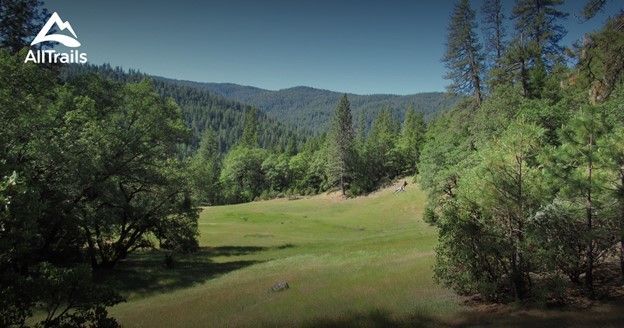Monumental Questions - Are people permitted to cut their own Christmas trees in the Mendocino National Forest?

The Berryessa Snow Mountain National Monument is jointly managed by both the Bureau of Land Management (BLM) and the United States Forest Service (USFS). The portion of the Berryessa Snow Mountain National Monument that is managed by the USFS includes a large section of the Mendocino National Forest. According to the USFS website, most national forests issue permits for home Christmas tree cutting, including the Mendocino!
Permits are required and the number issued each year is limited and are on a first come, first served basis. They are $10 and can be purchased in person at either the Mendocino National Forest Supervisor’s office in Willows or at the Upper Lake Ranger Station in Upper Lake (or at one of a few vendors in Covelo) until December 23, 2021. They can also be purchased by mail but only if received by December 14, 2021. The application can be found on the Forest Service's website and I was told that turn around time is quick. To purchase by mail, send the completed application along with your name, mailing address, phone number and a check or money order for $10 made out to “USDA Forest Service” to either of the offices listed below and don’t forget to indicate on the envelope that it’s for Christmas Tree Permit. Issued permits include maps that indicate forest boundaries, where in the forest cutting is allowed, a tree tag, and instructions on how to cut your tree. There are rules about what size tree you are allowed to cut as well as some Sudden Oak Death transportation restrictions so please be sure to consult the information included with the permit or ask at the Forest Supervisor’s Office or the Ranger Station. Because the number of permits is limited, please call one of the two offices to ensure that a permit is available for purchase before you set out on your adventure.
The Forest Service also provides some tips to make sure that you are prepared and have an enjoyable experience.
-Be sure to check the weather and bring warm layers and be prepared for changing weather conditions. Keep your vehicle on designated roads and be aware of mud or snow to avoid getting stuck and always be cautious of hazards in burned areas.
-Pack the car with emergency supplies like extra water and food, tire chains, and a full tank of gas. Also, be sure to let someone know where you’re going and when you expect to return.
-Make sure you have a saw or an axe to cut your tree, ropes and a tarp to transport it back home and be certain that you are cutting on forest land and not on private property. Don’t forget to attach your tree tag where it will be visible.
-To keep your tree fresher longer, cut about an inch off the base when you get it home and be sure to check the water level in the tree stand daily.
Below please find the contact information for the Forest Supervisor’s Office and the Upper Lake Ranger Stations. More information on the program in the Mendocino National Forest is available on the National Forest's website.
Mendocino National Forest Supervisor’s Office
825 N. Humboldt Avenue
Willows, CA 95988
530.934.3316
Upper Lake Ranger Station
10025 Elk Mountain Road
Upper Lake, CA 95485
707.275.2361
-Kristie Ehrhardt; kehrhardt@tuleyome.org
Tuleyome Land Conservation and Stewardship Program Manager
If you have questions about Berryessa Snow Mountain National Monument that you would like us to address, please email them to Nate Lillge (nlillge@tuleyome.org) or Kristie Ehrhardt (kehrhardt@tuleyome.org). More information can be found
RECENT ARTICLES






